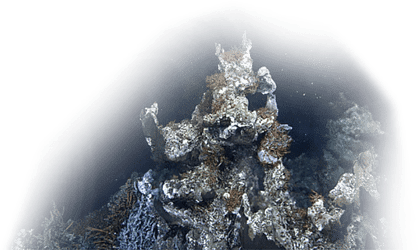On 7 January 2015, a magnitude 4.8 earthquake rattled houses in Tofino on Vancouver Island’s west coast shortly after dark. It was one of over 170 quakes to strike the BC coast during the first three weeks of the year. And while this crustal quake caused minimal damage, it gave residents in BC coastal communities good cause to consider their earthquake and tsunami response plans. There is a 1 in 10 chance that the west coast of Canada will experience a megathrust quake—over magnitude 8.4—within 50 years.
ONC’s NEPTUNE ocean observatory stretches hundreds of kilometers across the North American and Juan de Fuca tectonic plates, enabling realtime detection of seismic activity at multiple locations, from the margins of the subduction zone on the continental slope (Clayoquot Slope and Barkley Canyon sites), to mid-plate geodesy (Cascadia Basin), to the active hot vents and new crust forming at the mid-ocean ridge (Endeavour).
The Tofino quake, with an epicentre 30 km beneath the surface, registered on seismometers at all NEPTUNE observatory sites, transmitting live data to ONC’s data and management system, Oceans 2.0, for long-term study and analysis.
The magnitude 4.8 quake monitored by three NEPTUNE observatory sites at varying distances from the epicenter. Seismologists who use ONC data study the multiple phases of seismic energy waves to better understand this dynamic tectonic environment. The first waves measured are the fastest but not the most destructive. This information is helpful in early warning systems to anticipate the size and potential impact of the damaging waves that follow.
Echoes of an historic January megathruster
On 26 January 1700 —315 years ago—a massive magnitude 9 megathrust or subduction zone earthquake rocked the Pacific Northwest coast about 9:00 pm, followed by a devastating tsunami. Scientists now believe this historic event is similar to the magnitude 9.2 earthquake and tsunami that struck in the Indian Ocean on 26 December 2004, killing a quarter of a million people.
Most of the world’s largest earthquakes occur offshore in subduction zones including Cascadia, a 1000 km long fault in the Pacific Ocean off the west coast of North America, where the Juan de Fuca plate is slipping under the North American plate. These megathrust quakes occur approximately every 300 to 500 years, which suggests the BC coastal region is due for another “big one.”
Related Stories:
- Advances in understanding earthquakes and tsunamis (CBC.ca)
- America’s Tsunami: Are we Next? (Discovery Channel)
Interesting links:
- Tree rings prove the great quake of 1700 (Atwater/Yamaguchi)
- Earthquakes from the past 30 days (Natural Resources Canada)
